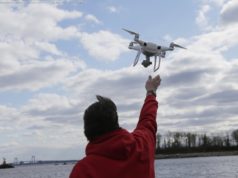A focus on nuclear deterrence would fall short of President Trump’s promises to finally “solve” the problem with North Korea.
WASHINGTON — When Defense Secretary Jim Mattis declared on Tuesday that North Korea now had the missile capability to “threaten everywhere in the world, basically,” he hinted at a long-running debate inside the United States government: Can the same strategy that worked against the Soviet Union — mutually assured destruction — also work against a far smaller adversary?
The answer is yes, of course it can, if the problem is defined as keeping Pyongyang from unleashing a surprise attack on the continental United States. Or no, it probably can’t, if the problem of containing North Korea is more complex than simply protecting Los Angeles and Washington.
And with North Korea, as the past 70 years of bitter experience have repeatedly shown, almost everything is more complex.
There is no evidence that Kim Jong-un, North Korea’s current leader, or his father or grandfather, ever contemplated getting into a direct nuclear exchange with the United States. Depending on whose estimates one believes, North Korea has 20 to 60 nuclear weapons; the United States has more than 1,500 currently deployed, and thousands more in storage. It would be, as one senior American military strategist put it a few weeks ago, a case of assisted suicide.
But that hardly means nuclear weapons are useless for a 33-year-old leader, who has made clear he has ambitious goals for how he would make use of the power conveyed by a global nuclear reach. If the previous leaders of North Korea were interested mostly in a survival strategy — and saw a small nuclear arsenal as the country’s best guarantee — Mr. Kim appears to have far greater ambitions.
South Korea may have all the technology and the money, but the North has a purity of purpose, in Mr. Kim’s mind, that will ultimately give it control of the entire Korean Peninsula. And with it, Mr. Kim believes, will come the respect of far larger powers that have been waiting, for decades, for the North to be swept away by forces of history.
That goal only works if an American president — President Trump or his successors — contemplates risking Chicago in order to save Seoul. Part of Mr. Kim’s vision, some of those who have watched him most closely speculate, is to sow doubt in Asia that the United States would really come to their allies’ aid — and splinter the alliance that has teamed up against North Korea for 70 years.
“Kim is determined to be a ‘Great Leader’ in his own right,” said Han Sung-joo, a former South Korean foreign minister, who still walks around carrying shrapnel he was hit with as a young boy, when his family was escaping North Korean forces during the Korean War. “And to do that,” Mr. Han said earlier this month, “he needs to accomplish something his grandfather and his father did not: Building an intercontinental missile that can strike anyplace in the United States.”
This summer, the Trump administration declared outright that if Mr. Kim succeeded in reaching that goal, conventional deterrence would not be enough. In a series of public statements, Mr. Trump’s national security adviser, Lt. Gen. H. R. McMaster, said that the methods that worked so effectively in the Cold War would not apply in the case of North Korea.
“The North Koreans have shown, through their words and actions, their intention to blackmail the United States into abandoning our South Korean ally, potentially clearing the path for a second Korean War,” General McMaster said, suggesting that the assumption that North Korea only wanted a nuclear weapon to assure survival may be wrong. He talked, on several occasions, about how a “preventive war” might be necessary if diplomacy failed.
“The president’s been very clear about it,” he said at another point. “He said he’s not going to tolerate North Korea being able to threaten the United States.”
It was not clear whether General McMaster’s comments were intended to signal a true willingness to go to war, or whether he was simply trying to shake the North Koreans — and the Chinese — into believing that Mr. Trump, unlike his predecessors, was perfectly willing to reach for a military solution to the problem. In recent months, General McMaster has not repeated those lines, perhaps hoping that a lull in North Korean missile testing might provide a diplomatic opening.
That hope was dashed with the latest, and most impressive, North Korean test. The ballistic missile it set off went roughly 2,800 miles into space, before returning to the Sea of Japan; it was intended to demonstrate that the North was now able to reach any corner of the United States. It is not clear whether Pyongyang really can, or whether it could keep a nuclear warhead from burning up in the return to earth — the real rocket science of launching nuclear missiles.
But one thing is clear: Whatever threats that Washington and Beijing issued in the past few months — sanctions, and the threat of oil cutoffs — have clearly not deterred Mr. Kim. Now he is betting that he can complete his project — solving the last technical details — before the United States, its allies and China can agree upon a unified response.
So far, that bet has proved correct. South Korea’s president, Moon Jae-in, has declared that there must never be another war on the Korean Peninsula, and suggested he has a veto power over any American decision to use force. (The Trump administration says the South Koreans, while close allies, have no such veto.) Japan has talked a tougher line, but has been within reach of North Korean nuclear weapons for years — and so far has lived with it, convincing itself that America’s nuclear umbrella had it covered.
Of course, no American official is prepared to admit that the United States is willing, however unhappily, to rely on conventional deterrence and live with a North Korean nuclear missile capability that can reach American shores as well. After all, a succession of American presidents, from Bill Clinton to George W. Bush to Barack Obama, have all said that would be intolerable.
But clearly that appears to be where the United States is headed. While Secretary of State Rex W. Tillerson said in Beijing at the end of September that he had several lines of communication open to the North Korean leadership, he has left unclear what the goal of any talks with Pyongyang might be. Getting North Korea to completely disarm, his aides conceded, is not remotely possible — and the North has rejected any talks that involve giving up its arsenal.
That leaves various proposals for a nuclear “freeze,” an agreement that North Korea would stop nuclear testing and missile shots like this week’s, in return for some American concession.






